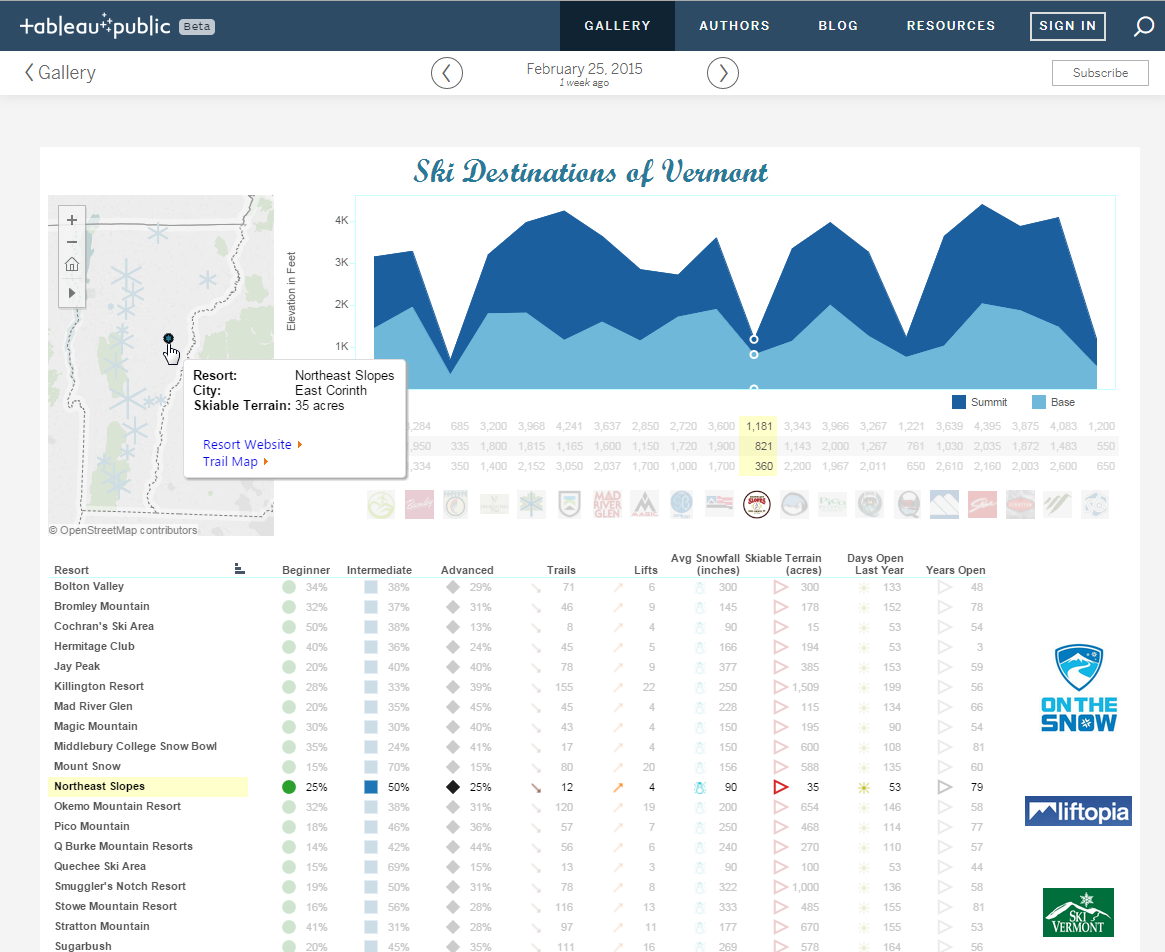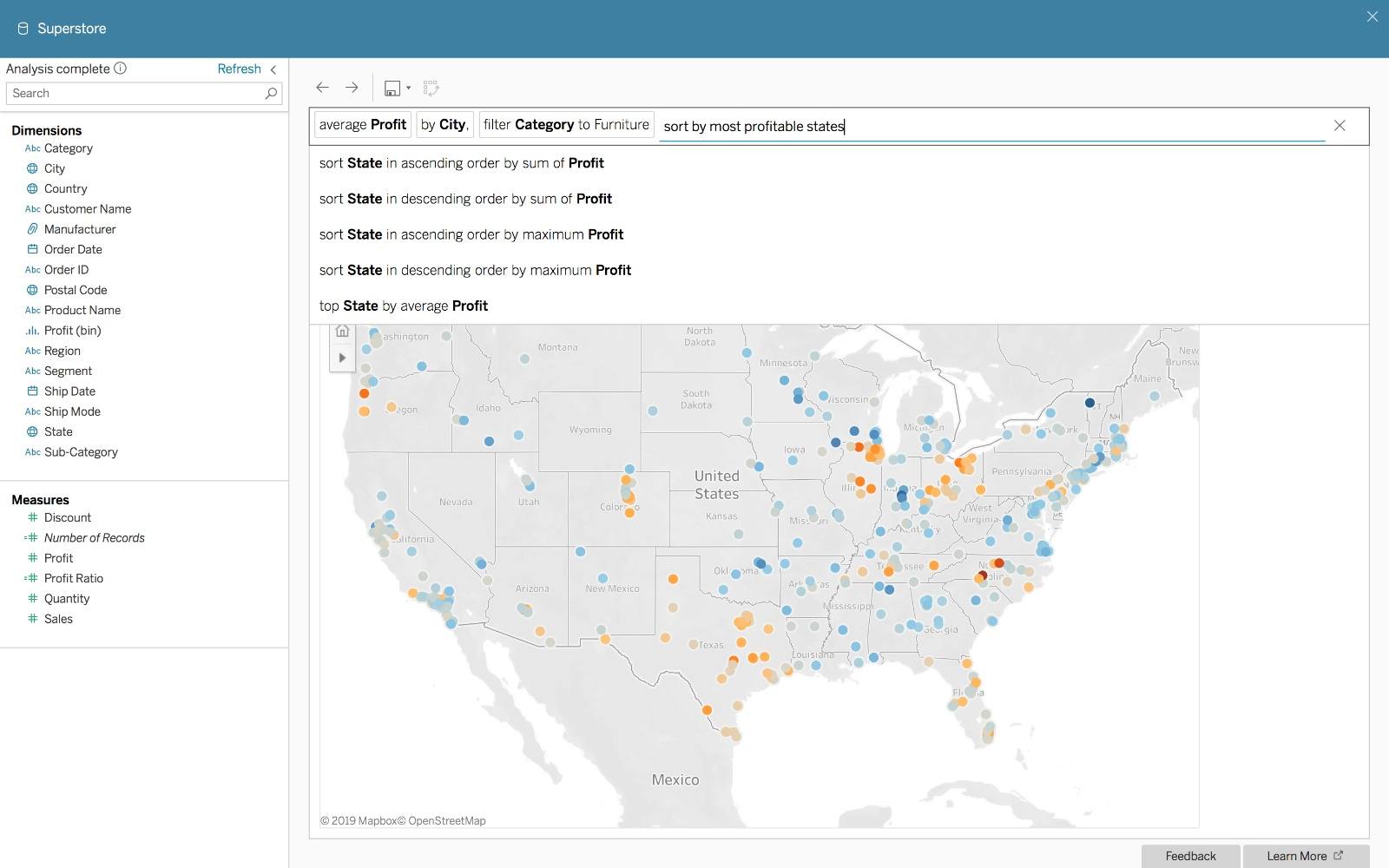
Tableau Careers
This article introduces logical functions and their uses in Tableau. It also demonstrates how to create a logical calculation using an example.

Why use logical calculations
Logical calculations allow you to determine if a certain condition is true or false (boolean logic). For example, you might want to quickly see if sales for each country you distribute your merchandise to were above or below a certain threshold.
Aug 07, 2021 Tableau software is one of the fastest growing data visualization tools which is currently being used in the BI industry. It is the best way to change or transform the raw set of data into an easily understandable format with zero technical skills and coding knowledge. Tableau helps people see and understand data. Our visual analytics platform is transforming the way people use data to solve problems. See why organizations of all sizes trust Tableau to help them be more data-driven. Tableau Public is free software that can allow anyone to connect to a spreadsheet or file and create interactive data visualizations for the web. A picture, as of a scene. A picturesque grouping of persons or objects; a striking scene. A representation of a picture, statue, scene, etc., by one or more persons suitably costumed and posed. Tableau software is one of the fastest growing data visualization tools which is currently being used in the BI industry. It is the best way to change or transform the raw set of data into an easily understandable format with zero technical skills and coding knowledge.
The logical calculation might look something like this:
SUM(Sales) > 1,000,000

Logical functions available in Tableau:
Function | Syntax | Description |
| IN | <expr1> IN <expr2> | Returns TRUE if any value in The values in Examples:
|
IF <expr1> AND <expr2> THEN <then> END | Performs a logical conjunction on two expressions. Example:
| |
| CASE | CASE <expression> WHEN <value1> THEN <return1> WHEN <value2> THEN <return2> .. ELSE <default return> END | Performs logical tests and returns appropriate values. The CASE function evaluates CASE is often easier to use than IIF or IF THEN ELSE. Typically, you use an IF function to perform a sequence of arbitrary tests, and you use a CASE function to search for a match to an expression. But a CASE function can always be rewritten as an IF function , although the CASE function will generally be more concise. Many times you can use a group to get the same results as a complicated case function. Examples:
|
| ELSE | IF <expr> THEN <then> ELSE <else> END | Tests a series of expressions returning the <then> value for the first true <expr>. Example:
|
| ELSEIF | IF <expr> THEN <then> [ELSEIF <expr2> THEN <then2>..] [ELSE <else>] END | Tests a series of expressions returning the <then> value for the first true <expr>. Example:
|
| END | IF <expr> THEN <then> [ELSEIF <expr2> THEN <then2>..] [ELSE <else>] END | Tests a series of expressions returning the <then> value for the first true <expr>. Must be placed at the end of an expression. Example:
|
| IF | IF <expr> THEN <then> [ELSEIF <expr2> THEN <then2>..] [ELSE <else>] END | Tests a series of expressions returning the <then> value for the first true <expr>. Example:
|
| IFNULL | IFNULL(expr1, expr2) | Returns <expr1> if it is not null, otherwise returns <expr2>. Example:
|
| IIF | IIF(test, then, else, [unknown]) | Checks whether a condition is met, and returns one value if TRUE, another value if FALSE, and an optional third value or NULL if unknown. Example:
|
| ISDATE | ISDATE(string) | Returns true if a given string is a valid date. Example:
|
| ISNULL | ISNULL(expression) | Returns true if the expression is NULL (does not contain valid data). Example:
|
| MAX | MAX(expression) or Max(expr1, expr2) | Returns the maximum of a single expression across all records or the maximum of two expressions for each record. Example:
|
| MIN | MIN(expression) or MIN(expr1, expr2) | Returns the minimum of an expression across all records or the minimum of two expressions for each record. Example:
|
| NOT | IF NOT <expr> THEN <then> END | Performs logical negation on an expression. Example:
|
| OR | IF <expr1> OR <expr2> THEN <then> END | Performs a logical disjunction on two expressions. Example:
|
| THEN | IF <expre> THEN <then> [ELSEIF ,expr2> THEN <then2>..] [ELSE <else>] END | Tests a series of expressions returning the <then> value for the first true <expr>. Example:
|
| WHEN | CASE <expr> WHEN <Value1> THEN <return1> .. [ELSE <else>] END | Finds the first <value> that matches <expr> and returns the corresponding <return>. Example:
|
| ZN | ZN(expression) | Returns <expression> if it is not null, otherwise returns zero. Example:
|
Create a logical calculation
Follow along with the steps below to learn how to create a logical calculation.
Tableau Public
In Tableau Desktop, connect to the Sample - Superstore saved data source, which comes with Tableau.
Navigate to a worksheet.
From the Data pane, drag State to the Rows shelf.
From the Data pane, drag Category to the Rows shelf and place it to the right of State.
From the Data pane, drag Sales to the Columns shelf.
Select Analysis > Create Calculated Field.
In the calculation editor that opens, do the following:
Name the calculated field, KPI.
Enter the following formula:
SUM([Profit]) > 0This calculation quickly checks if a member is great than zero. If so, it returns true; if not, it returns false.
When finished, click OK.
The new calculated field appears under Measures in the Data pane. Just like your other fields, you can use it in onr or more visualizations.
From the Data pane, drag KPI to Color on the Marks card.
You can now see which categories are losing money in each state.